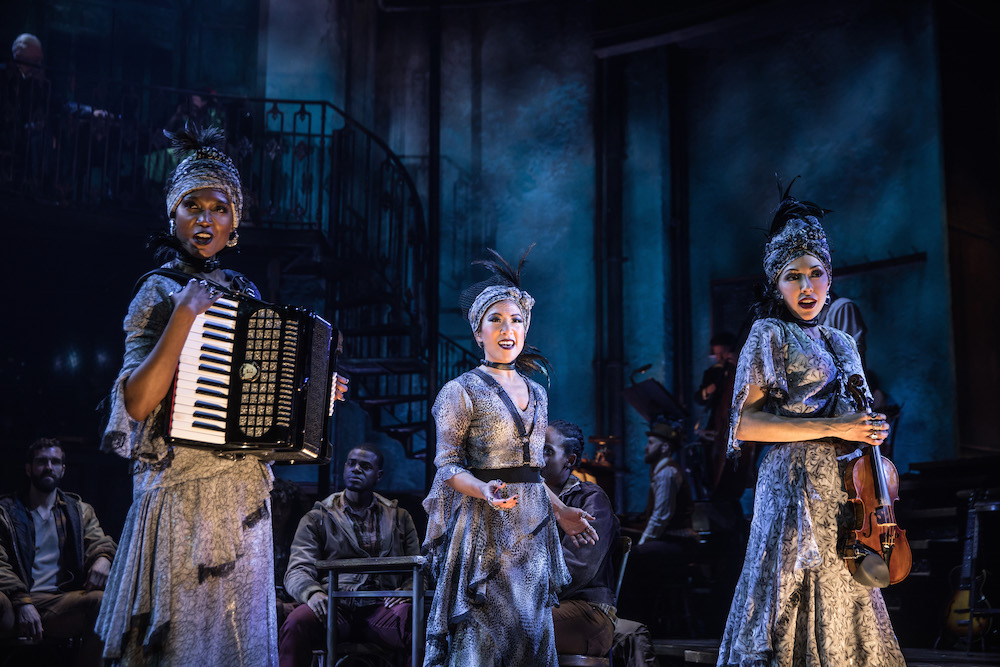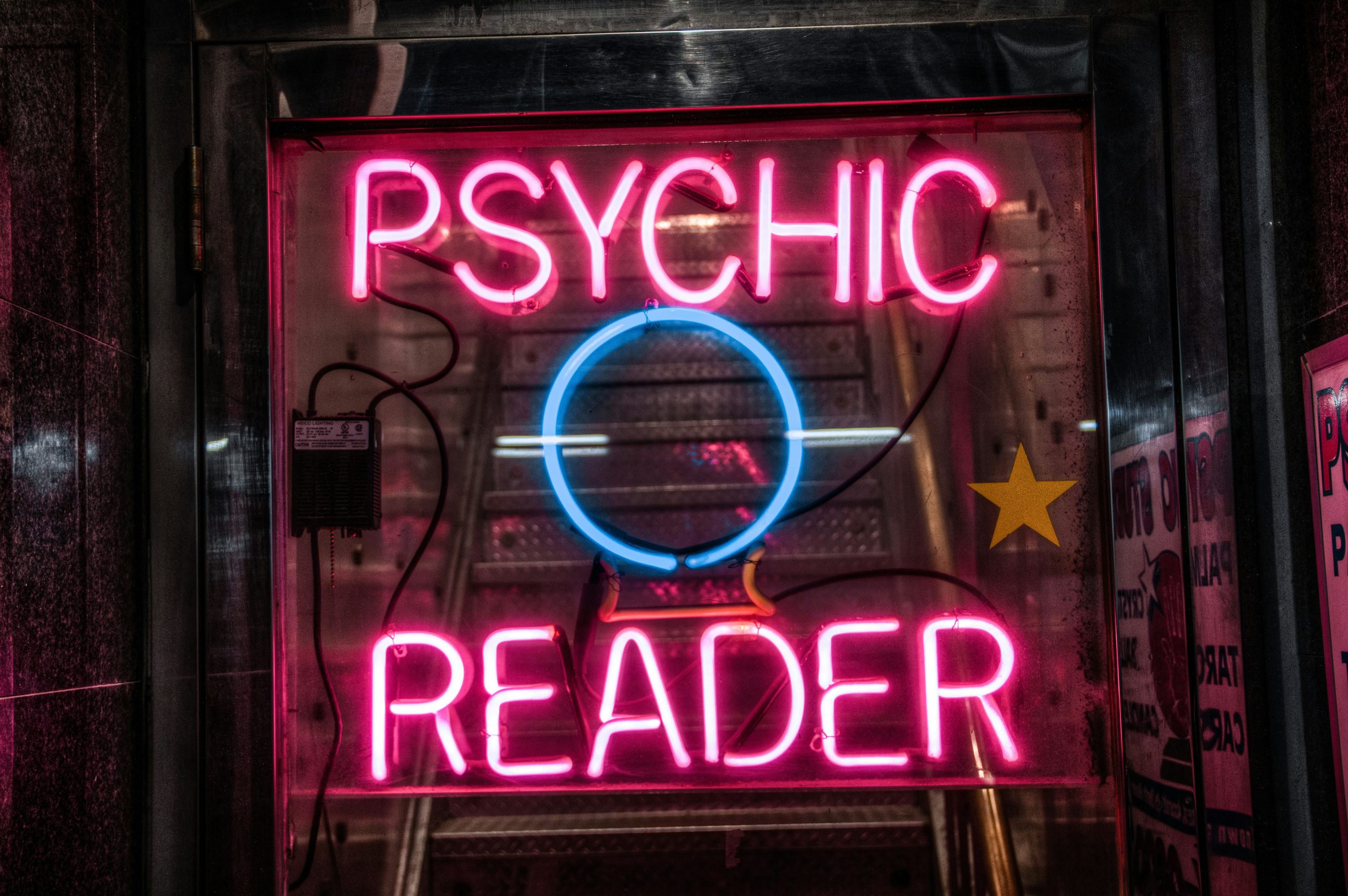Books & Culture
How “Hadestown” Turned an Ancient Story Into This Year’s Best Musical
The Tony-winning show's writer and director discuss the storytelling challenges of bringing new life to old myth

The road to hell is a lengthy passage in Hadestown, but the journey of Anais’ Mitchell’s re-envisioning of ancient Greek myths to Tony-winning victory on Broadway seems even longer and more transformative. Somehow when diving into the two of the most well-known tales from the ancient Greek canon, the singer-songwriter discovered new truths in the timeless dramas. Stories of doomed love at first sight became sprightly duets of flirtatious teasing, while Hades himself was transformed into an imposing politician and businessman in Mitchell’s self-proclaimed “folk opera,” one of the most inventive scores to play on Broadway in years.
It’s hard to describe exactly what Hadestown is. It’s two Greek myths—Hades and Persephone and Orpheus and Eurydice—adapted into a musical. It’s a classic story with startlingly modern themes. It’s an ancient tale told in one of the most inventive new musicals Broadway has seen in years. It is also the only musical of the 2018–19 Broadway season directed by a woman and written by a woman—one of the few women ever to have written the entirety of a new musical, both book and score, on her own.
The best Broadway musical of the year had humble, DIY beginnings. It began performances in 2006 at a community theater in Vermont, with Mitchell herself playing Eurydice. In 2010 she released a concept album, featuring Bon Iver’s Justin Vernon as Orpheus and singer-songwriter Ani DiFranco as Persephone. (The album was released by DiFranco’s label Righteous Babe Records.)

When Mitchell and Chavkin first met in 2012, Chavkin had heard Mitchell’s concept album, and Mitchell had admired Natasha, Pierre and the Great Comet of 1812, the wildly imaginative and unconventional musical Chavkin was directing Off-Broadway. They started collaborating soon after, combining their respective talents for songwriting and musical direction to develop Hadestown as a musical. Their work was first seen Off-Broadway in 2016 when Hadestown opened at New York Theatre Workshop. It then played Canada in 2017 and London’s Royal National Theatre in 2018, undergoing significant revisions along the way. The sets changed, as did the staging—from theater in the round to proscenium style—and Chavkin and Mitchell strove to strengthen the story’s connective tissue—a challenging attempt for Mitchell, who was encouraged by Chavkin to encourage the audience’s comprehension of the story by writing it into the text. It was tough, Mitchell admitted, to communicate in a “practical storytelling level” while still striving for the “mystical poetic level” of the story.
“[Rachel] often felt that if I truly wanted the audience to grasp something in the storytelling, I should put it in the text, which is all musicalized / underscored anyway,” Mitchell said. “That is, I shouldn’t assume that it could be represented or grasped visually. It really pushed me to go further as a writer than I ever thought possible.”
Hadestown, according to Mitchell, is set in a “set in a darkly political, Americana dreamscape.” Onstage, the story takes place in two distinct settings: aboveground and underground. Above, the characters converge in a New Orleans-style café inspired in part by the famous jazz venue Preservation Hall, whose aesthetics also inspired the costume designs, Chavkin said. Underground, Hadestown is dark, dreary and mechanical—a factory from which there is no escape.

Eurydice soon finds herself trapped in the wasteland underground. Finding herself lonely and hungry after falling in love with Orpheus, as her poetic husband strives to compose his perfect song, she is tempted by Hades with ideas of security and prosperity and travels to the titular factory underworld where she is locked in never-ending toil to build a wall surrounding the town.
The workers march in an endless circle, muscles strained and sweating, and their ruler delivers a speech on “Why We Build the Wall,” which Mitchell wrote long before Donald Trump had declared his campaign promise of a border wall. Thoughts of modern-day America are inevitable; Hadestown represents industrialization, climate change, and, obviously, a wall to shut out the impoverished.
The first audiences loved the music, Mitchell said, but they had trouble following the plot. To those unfamiliar with the ancient tales, it wasn’t clear what was happening and why.
“We were sort of assuming a lot of knowledge about Greek mythology on the part of the audience,” Mitchell said of the early stagings. “The idea that Persephone lives above ground for half the year and below ground the other half—there was nothing in the show to explain or indicate that to folks. They just had to come into the theater knowing it.”
To those unfamiliar with the ancient tales, it wasn’t clear what was happening and why.
So during workshops they introduced the character of Hermes, played in the current show by Broadway veteran André De Shields. Dapper in a shining silver suit, the god of oration welcomes the audience and remains onstage for much of the musical, a jaunty and impish emcee and narrator. Essentially, Chavkin and Mitchell solved the problem of audiences being unfamiliar with ancient Greek mythology by turning to ancient Greek drama: Hermes and The Fates—Jewelle Blackman, Yvette Gonzalez-Nacer, and Kay Trinidad, three sister deities—serve as a musical Greek chorus, keeping the audience aware of both the details and the stakes.

Even with Hermes available to explain the basics of the myth, though, there remained the challenge of bringing ancient characters into a modern context and giving them plausible emotional motivations. Early audiences didn’t understand why Eurydice, played on Broadway by Eva Noblezada, would fall in love with Orpheus, currently played by Reeve Carney. He’s an idealistic aspiring songwriter, and she’s a vagabond, a solo survivor wandering the Earth—what draws them together? What makes her love him, what takes her away from him, and what sends him to find her? In the myth, the answer is basically “that’s just how the story goes,” but audiences wanted more. Both characters underwent significant development as the show progressed, Mitchell said, especially when developing the motivation of the soulful, artistic Orpheus: “There has been a lot of digging in over the years to who this character of Orpheus is. What motivates him, besides his love for Eurydice? Finally it felt like it satisfied at both a story and a poetic level that he believed he could ‘bring the world back into tune’ with his music.”
Orpheus travels though that darkness to find Eurydice and bring her home, inspiring Hades with his song to offer the young lovers a chance to escape and setting in motion the inevitable tragedy. But their story isn’t over: The musical travels full-circle. After Eurydice is forced to return to Hades, the show immediately returns to its opening number, with Orpheus and Eurydice meeting each other again as if anew. “It’s an old song,” Hermes sings in the show’s opening moments, and again at the end. “And we’re gonna sing it again . . . Maybe it will turn out this time.”
‘It’s an old song,’ Hermes sings in the show’s opening moments, and again at the end. ‘And we’re gonna sing it again.’
Bringing the story full circle to its beginning first took root at New York Theatre Workshop but didn’t come to life, with the characters returning to the stage in their Act One costumes, until the London production—a technique that Mitchell said “really tugs [her] heart.”
This moment, moving from tragic loss to a glimmer of hope, inspired some gasps from audience members as the two characters doomed to spend eternity apart reappear and begin the story again. The promise of another chance also offers some insight into the two lovers’ instant, otherworldly connection. Such immediate, intense love inspired skepticism to audiences watching the dreamer Orpheus romance the pragmatic Eurydice singing, “I knew you before we met/I don’t even know you yet… All I know is you’re someone I have always known.” Even less plausible is his decision, after learning she left him for Hadestown, to travel the road to hell to save her. But upon witnessing them meet again for the first time, a bittersweet truth is infused into their melody.
“That was an interesting evolution,” Mitchell says. “It felt like a very full-circle moment for the narrator to reflect on the meaning of having told the story and the sort of passing of the torch of hope from the artist Orpheus to the storyteller, who’s going to tell it again.”








